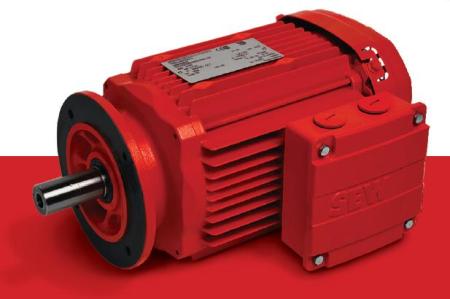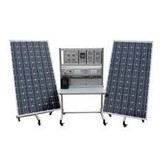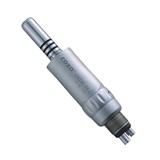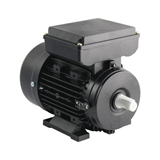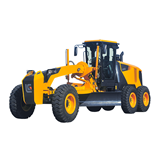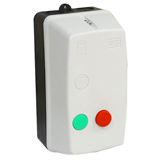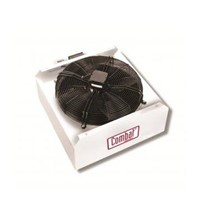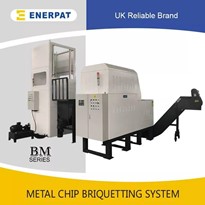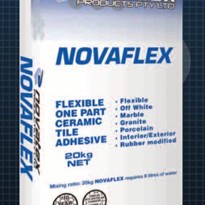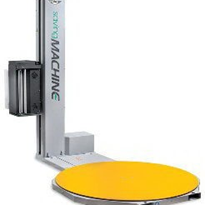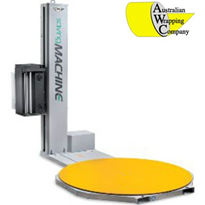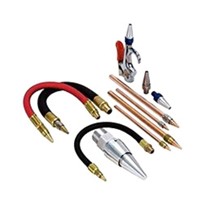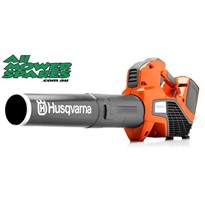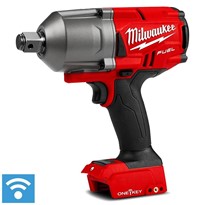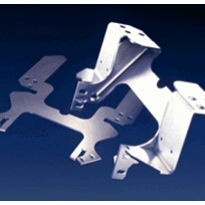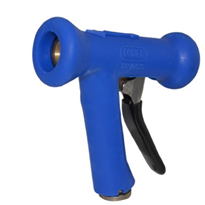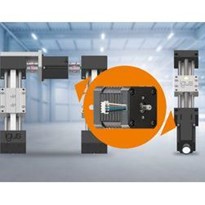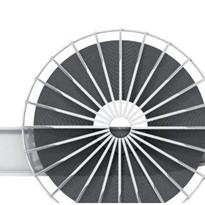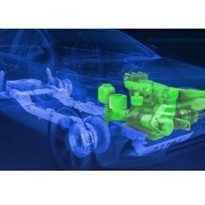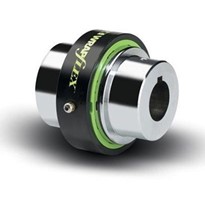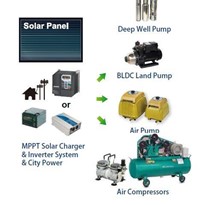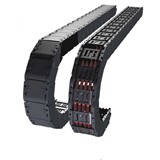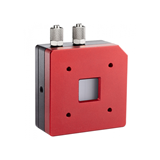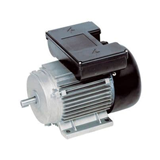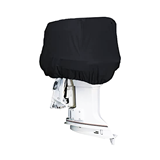The government wants you to conserve energy. If you are in the market for a motor, there are incentives for you to replace your inefficient motor with a new MEPS High Efficiency (IE2) or Premium Efficiency (IE3) motor.
Now, you might think that buying a "premium-efficient" motor is the answer to your energy usage problems. If so, you are overlooking an important fact: a premium-efficient motor is only one part of the energy saving equation.
While premium-efficient motors certainly do help to reduce energy usage, they are by no means the cure-all.
For maximum energy savings, it is important to look at the entire drivetrain, understand the misconceptions that surround premium-efficient motors and be sure you are investing your money wisely.
Common premium-efficient motor misconceptions
Efficiency automatically equals savings
Not necessarily; it depends on the application. Current Australian MEPS requirements mandate that new motor efficiencies be as a minimum IE2 High Efficiency motor or IE3 Premium Efficiency with efficiencies based on AS1359.5:2004, which "roughly" aligns with the international IEC60034:30 standard on induction motor energy efficiency.
The efficiency levels are typically based upon 80-100 per cent loading with the motor connected to constant power source (i.e. across the line). So purchasing a High or Premium Efficiency motor from one manufacturer will very likely give you a motor with basically the same efficiency as a High or Premium Efficiency motor purchased from another manufacturer.
If you only install a premium-efficient motor, you are not automatically saving all the money you could be.
There are multiple reasons why this might be possible: your new motor may only be a few per cent more efficient than your previous motor – therefore, in cycling or intermittent duty applications, the savings you recognise are so small that they are outweighed by the higher cost of the new motor; your new motor may not be well-suited to saving energy in your type of application, e.g. high-cycling applications; your new motor may be oversized for the application, yielding much less efficiency than what the nameplate says; other parts of your drivetrain may be much less efficient, causing higher-than-necessary energy consumption from your efficient motor; and while a premium-efficient motor is important, it's critical to evaluate your entire drivetrain for efficiency and to realise that the motor is just a single part of the overall equation.
Replacing my motor will give me the best bang for my buck
It depends. A motor is only one component in the drivetrain (and, truth be told, motors for some time have been comparatively efficient). Each component in a system will inherently have some inefficiency and these energy losses multiply together to provide an overall system efficiency. Just one component with poor efficiency will quickly drag down the rest of the system.
Replacing my motor will automatically make my line more efficient
Well, yes – but by less than you can expect. However, replacing some of the other components along with your motor can provide some very substantial efficiency gains. Consider, for instance, that you replace the gear unit as well as the motor. Worm gear units, which are installed in many manufacturing environments, are inherently inefficient, as the gears are essentially sliding against one another causing heat (energy loss).
Sure, there are instances on which worm drives are necessary for the application (e.g. withstanding heavy shock loads, or providing back-driving resistance). But, in many applications a helical-bevel gear units, which operates with rolling contact, will be much more efficient.
Now you are quickly recognising substantial, double-digit efficiency grains- nearly 20 per cent – and your line begins to become much more efficient. To gain even more efficiency, consider changing or eliminating your transmission elements.
A premium-efficient motor is an appropriate energy-saving choice for all applications
Again, it depends. Most premium-efficient motors used in continuously-running applications will begin to show at least modest energy savings (depending, as previously shown, on the other elements in the drivetrain).
But, motors used in high-cycling applications may never recognise the entire efficiency gain of a premium-efficient motor, due to the start-and-stop nature of the application fighting against the higher rotor inertia of many premium-efficient motors.
Hence, the extra investment in a high-efficiency motor may not ever be completely recouped. However, some Premium Efficiency motors, such as the DRP motor from SEW-EURODRIVE are engineered to make them more efficient in high-cycling applications. These motors are designed with low losses, and less heat accumulation in the windings, which increases efficiency and provides a very high number of starts and stops per hour.
Be sure that you consider all the options available to you, and be careful to choose the premium efficient motor that is best suited to your need.
Adding a variable frequency drive (VFD) will automatically make my line more efficient
Maybe, but as the efficiency equation shows, a VFD is a load. It produces heat (losses) from electricity conversion, switching frequency, and harmonics. So by itself, it will decrease your system efficiency.
What's many VFD's have an adjustable carrier frequency that reduces audible noise during operation. Unfortunately, when the carrier frequency increases, so does the heat. In fact, the heat produced as a high carrier frequency can be so significant that a room full of VFD's may require a substantial increase in air conditioning.
Thus, the key to energy savings is to use a VFD to reduce other losses in the system (i.e. smart control), as in the following applications.
Regenerative energy: when a motor is trying to stop a high inertia load or lower a load, it acts as a generator. All of the kinetic or potential energy stored in the machine has to be removed. All of the kinetic or potential energy stored in the machine has to be removed.
Typically, it is wasted as heat through a braking resistor. But, a regenerative VFD can put the energy back onto the grid. Some even allow the energy to be directly given to another VFD as it accelerates, such as in a storage retrieval system.
What's the bottom line? If properly used, VFDs can have some big efficiency benefits when added as part of a complete drivetrain efficiency solution.
- Suppliers
- New to IndustrySearch? Book a Demo
- Advertise with us
- Login
- Email Marketing
- Buyers
- Get Quotes
- Articles & Ideas
- Login
- Subscribe to newsletter
- My Details
- Get Quotes
- Automation & Control
- Automotive Workshop Equipment
- Commercial Cleaning Equipment & Supplies
- Construction Equipment & Heavy Machinery
- Conveyor Systems & Components
- Electrical & Power Generation Equipment
- Electronic Components
- Farming & Agriculture
- Food & Beverage Processing
- Forklifts & Forklift Attachments
- Hydraulic & Pneumatic Equipment
- Industrial Materials, Tools & Components
- Industrial Pumps
- IT Hardware & Industrial Computing
- IT Software & Applications
- Laboratory Equipment & Instruments
- Manufacturing & Industrial Equipment
- Material Handling & Lifting Equipment
- Metalworking & Machining
- Mining Equipment & Machinery
- Packaging & Labelling Machinery
- Pallet Handling Equipment
- Personal Protective Equipment
- Security & Surveillance
- Test & Measurement
- Transport & Logistic Equipment
- Warehouse Storage, Shelving & Racking
- Waste Treatment & Environmental Management
- Welding Machines & Accessories
- Woodworking & Joinery Machines
- Workplace Equipment
- Workplace Safety Equipment
- Get Quotes
- Automation & Control
- Automotive Workshop Equipment
- Commercial Cleaning Equipment & Supplies
- Construction Equipment & Heavy Machinery
- Conveyor Systems & Components
- Electrical & Power Generation Equipment
- Electronic Components
- Farming & Agriculture
- Food & Beverage Processing
- Forklifts & Forklift Attachments
- Hydraulic & Pneumatic Equipment
- Industrial Materials, Tools & Components
- Industrial Pumps
- IT Hardware & Industrial Computing
- IT Software & Applications
- Laboratory Equipment & Instruments
- Manufacturing & Industrial Equipment
- Material Handling & Lifting Equipment
- Metalworking & Machining
- Mining Equipment & Machinery
- Packaging & Labelling Machinery
- Pallet Handling Equipment
- Personal Protective Equipment
- Security & Surveillance
- Test & Measurement
- Transport & Logistic Equipment
- Warehouse Storage, Shelving & Racking
- Waste Treatment & Environmental Management
- Welding Machines & Accessories
- Woodworking & Joinery Machines
- Workplace Equipment
- Workplace Safety Equipment
Trusted by 1,000,000+ Australian industrial buyers
Buyers
- Discover products & solutions
- Login
- Subscribe To Newsletter
- Browse All Products
- Read Articles
Suppliers
Advertise
- Promote your products & solutions
- New to IndustrySearch? Book a Demo
- Login / Forgot Password
- Advertise Your Products
- Success Stories
- Email Marketing
- Suppliers
- Advertise with us
- Login
- Email Marketing
- Buyers
- Get Quotes
- Articles & Ideas
- Login
- Subscribe to newsletter
- My Details
Get Quotes
- Automation & Control
- Automotive Workshop Equipment
- Commercial Cleaning Equipment & Supplies
- Construction Equipment & Heavy Machinery
- Conveyor Systems & Components
- Electrical & Power Generation Equipment
- Electronic Components
- Farming & Agriculture
- Food & Beverage Processing
- Forklifts & Forklift Attachments
- Hydraulic & Pneumatic Equipment
- Industrial Materials, Tools & Components
- Industrial Pumps
- IT Hardware & Industrial Computing
- IT Software & Applications
- Laboratory Equipment & Instruments
- Manufacturing & Industrial Equipment
- Material Handling & Lifting Equipment
- Metalworking & Machining
- Mining Equipment & Machinery
- Packaging & Labelling Machinery
- Pallet Handling Equipment
- Personal Protective Equipment
- Security & Surveillance
- Test & Measurement
- Transport & Logistic Equipment
- Warehouse Storage, Shelving & Racking
- Waste Treatment & Environmental Management
- Welding Machines & Accessories
- Woodworking & Joinery Machines
- Workplace Equipment
- Workplace Safety Equipment
Get Quotes
- Automation & Control
- Automotive Workshop Equipment
- Commercial Cleaning Equipment & Supplies
- Construction Equipment & Heavy Machinery
- Conveyor Systems & Components
- Electrical & Power Generation Equipment
- Electronic Components
- Farming & Agriculture
- Food & Beverage Processing
- Forklifts & Forklift Attachments
- Hydraulic & Pneumatic Equipment
- Industrial Materials, Tools & Components
- Industrial Pumps
- IT Hardware & Industrial Computing
- IT Software & Applications
- Laboratory Equipment & Instruments
- Manufacturing & Industrial Equipment
- Material Handling & Lifting Equipment
- Metalworking & Machining
- Mining Equipment & Machinery
- Packaging & Labelling Machinery
- Pallet Handling Equipment
- Personal Protective Equipment
- Security & Surveillance
- Test & Measurement
- Transport & Logistic Equipment
- Warehouse Storage, Shelving & Racking
- Waste Treatment & Environmental Management
- Welding Machines & Accessories
- Woodworking & Joinery Machines
- Workplace Equipment
- Workplace Safety Equipment
Trusted by 1,000,000+ Australian industrial buyers


